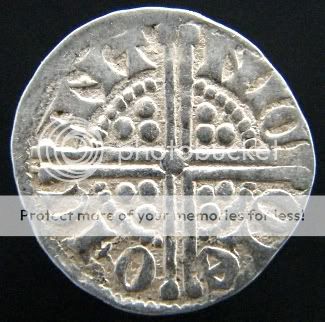
A showcase of Edward I's coinage with many pictures...
Edward I was born in June 1239 and was named so by his father, Henry III, after the final Anglo-Saxon king and saint, Edward the Confessor. At the age of 15, Edward traveled to Spain to marry a 9 year old who was known as Eleanor of Castile. Edward’s father was seen to be a volatile character and was not careful with his money, Edward had intentions to be the opposite.
Edward returned to England in 1274 from the Crusades in Palestine in order to rule his father's kingdom. The coins of 1272-3 were a continuation of his father's Voided Long Cross, then there was a shake-up as St Edmundsbury was reopened. For the next four years coins were minted that resembled Henry III's Longcross coinage and therefore had hENRICUS on the obverse, still bearing the name of Edward's father. Therefore these pennies often get confused with being of Henry III's reign. For these four years, more than 30 tonnes of silver were pumped out of London alone in these new coins.
This crude coinage was abandoned in 1278 due to the poor conditions, they were put under review of the Parliament of Gloucester and much of the clipping was unfortunately blamed upon the Jews, the majority of whom were unfortunately hung.
On May 17th 1279 Rolandin de Puy and Gregory de Rokesley were presented the titles "Keepers of the King's Exchange". However the issue of the improved Edward I Pennies was not implemented until August 4th, and only at London. After various experimental dies, Edward chose to appear without a beard even though he was a man of significant age for the time with a large beard. One thought is that he chose not to be represented with his whiskers so as to differentiate from the barbaric issues of his earlier coinage.
It was soon realised that the task taken on for the new coinage was far too great for London and Canterbury alone so Bristol and York were reopened with 12 furnaces at each mint. This allowed a healthy supplement to the mintage of London and Canterbury. Lincoln was added shortly after along with Newcastle and the ecclesiastical mint at York, the other ecclesiastical mints that were open were of Durham and St Edmundsbury (Bury St Edmunds). In 1281 Chester was also given a mint, followed by Berwick, Kingston-upon-Hull and Exeter.
This recoinage was not just of pennies, one must remember that Edward I also issued Farthings, Halfpennies and Groats. With the new monarch and recoinage undoubtedly came new legends, the major change was the prefix of CIVI TAS, or VILLA, this wiped out the need for moneyers’ names to be added to the legends of the coins.


Above is an example of the transitional coinage between Henry III and Edward I. It features the 'old style' of the Voided Longcross and the moneyer's name. This particular example is of Ioh on Bury Saint Edmunds, Class VI.
Below is an example of the Henry III Voided Longcross coinage which the above coin borrows stylistic elements from.


Class VI is more commonplace than its counterpart, Class VII. There is still evidence of cutting and clipping with these early coins of Edward I, below is an example of a scarce Class VII, Phelip on London.


Next up is a Class 3c of London, an example of the recoinage.



3d of London


3g of London


5a of London, error as reads IVCI TAS LON DON


3c of Bristol
(VILL ABR ISTO LLIE)


Blunt 4/Withers 5b of Berwick


3e of York, double-struck


9b/10a of Newcastle
(VILL NOVI CAS TRI)


3c of Lincoln


9b of the scarce mint of Chester


9b1 of scarce Exeter


9b of scarce Kingston-upon-Hull


1b of Dublin


For the first time, halfpennies become a more permanent feature alongside the pennies.
Class 3e Halfpenny of Newcastle.


Then there's the minutest of Edward's coinage, the farthings.
Class 3de Farthing, LON DON IEN SIS.

